Balcony politics
Barcelona offers visitors a wide flag landscape on the façades of its buildings
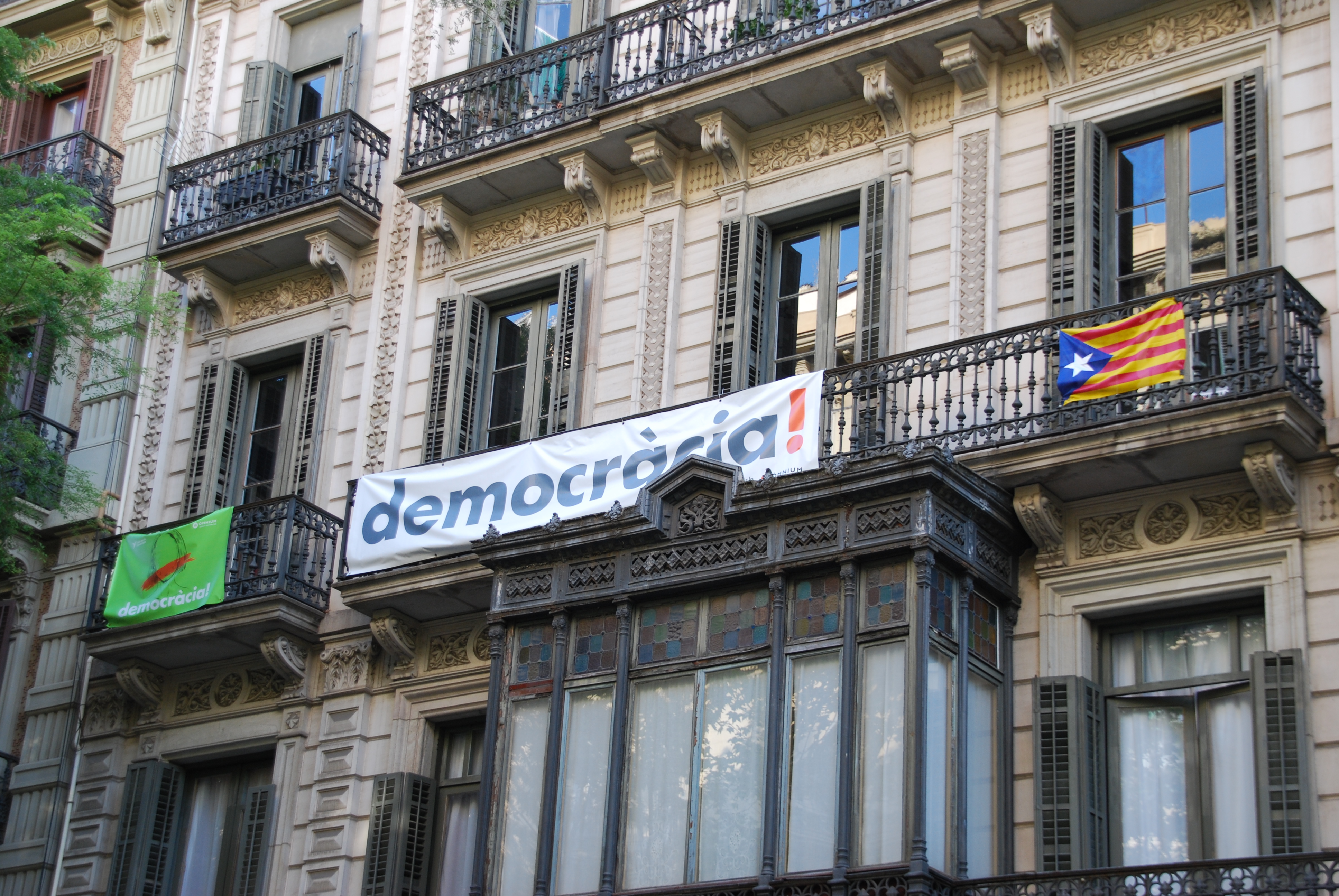
Barcelona already offers the chance to lose oneself in its streets, cultural diversity, beaches, or renowned modernist art. In looking up at the buildings, though, one can observe a whole new landscape—one made of flags, on the many balconies.
Putting political flags on display is not a new act in Catalonia, but it’s experienced a boom in recent years. Already, pro-independence flags were being put up in every square, balcony, and corner of Catalonia, ever since the campaign for greater sovereignty known as the ‘procés’ began. And since the referendum on October 1, a tide of flags, symbols and ideological messages both in favour of Catalonia as an independent state, and against it, started to hang from Catalan balconies.
Given the complexity of the political situation that Catalonia has experienced in recent years, even locals sometimes find it hard to recognize the meaning of each and every flag; tourists, even more so. But with a simple guide, the flags paint a more complete picture of a whole new landscape.
1. "La Senyera"
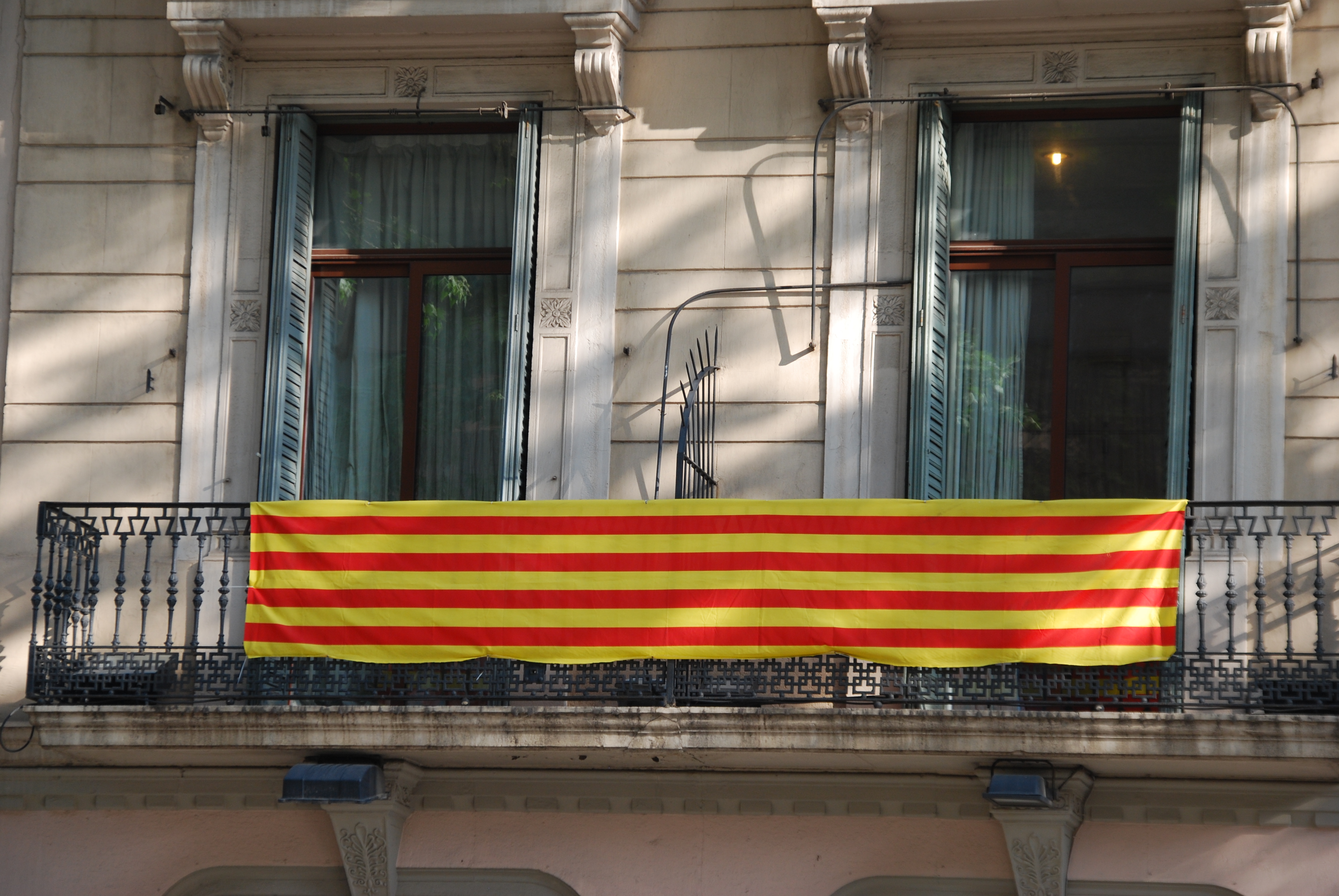
"La Senyera," the official flag of Catalonia, is one of the most popular flags on show in the city, and therefore, is one of most easily recognizable. The legend behind it is well-known: at the end of the 9th century, Guifré El Pilós, count of Barcelona, and the French Emperor fought against the Normans. When the battle was over, and as Guifré El Pilós lay injured, the Emperor stained his right hand with his blood and passed his four fingers over the gold shield, creating the flag.
This flag stands in the middle of the two sides of the Catalan independence roadmap. It is beloved by both pro-independence supporters and unionists, and it can hold different meanings depending on the context. If you see it hanging from a balcony by itself, it could either identify someone who supports a Catalan republic or someone in favor of remaining in Spain.
2. The blue "Estelada"
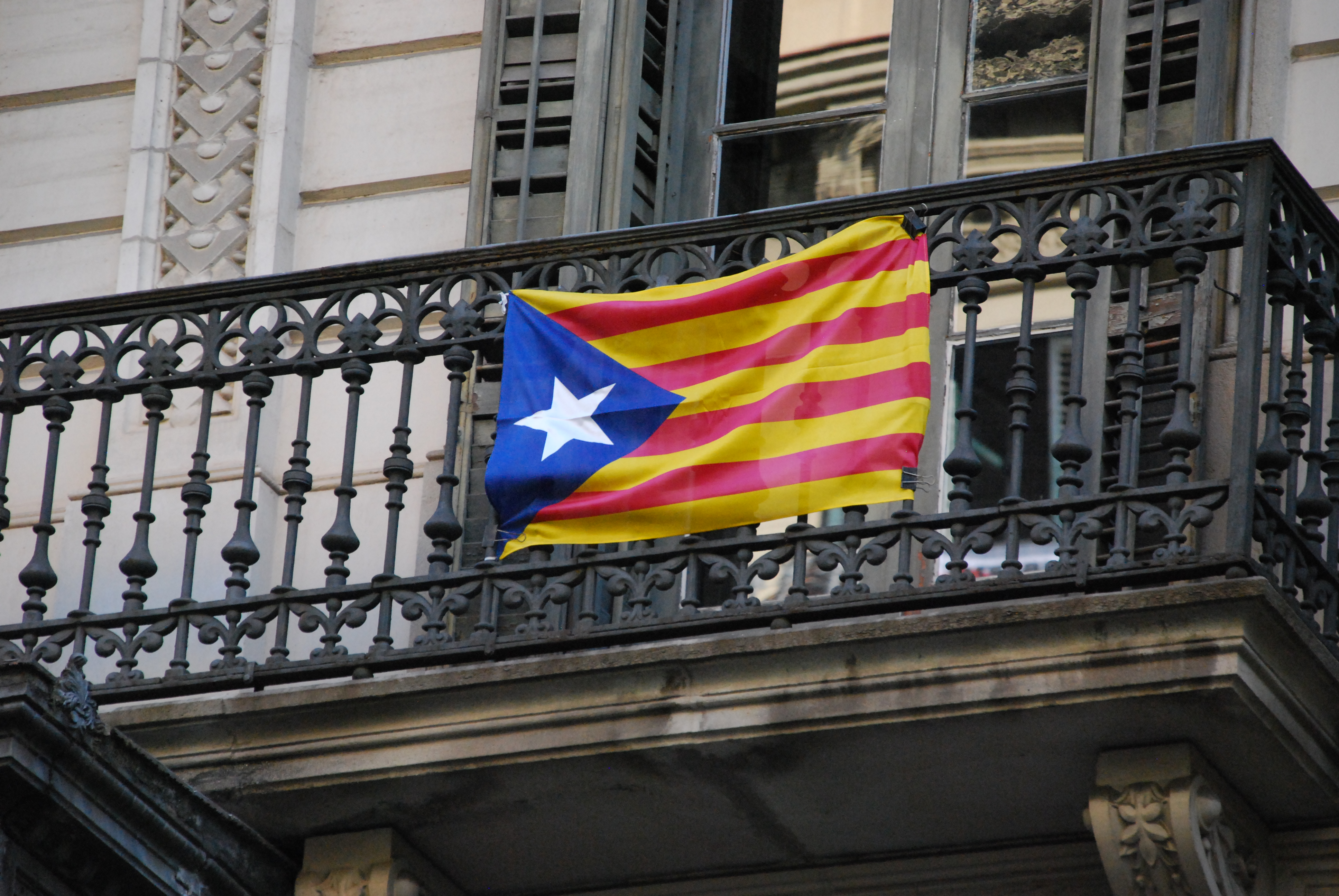
This "Estelada" is the most famous and popular flag seen in Barcelona. It’s not an official flag, and is associated with the independence movement. The name comes from ‘estel’ which means shining star in Catalan. It was created by Vicenç Albert Ballester and is an allusion to the so-called "1898 Disaster," when Spain lost its colonies. It gained fame during the Catalan autonomist campaign of 1918.
It’s seen as the official flag of the independence movement and is always present in any pro-independence demonstration.
3. The red “Estelada”
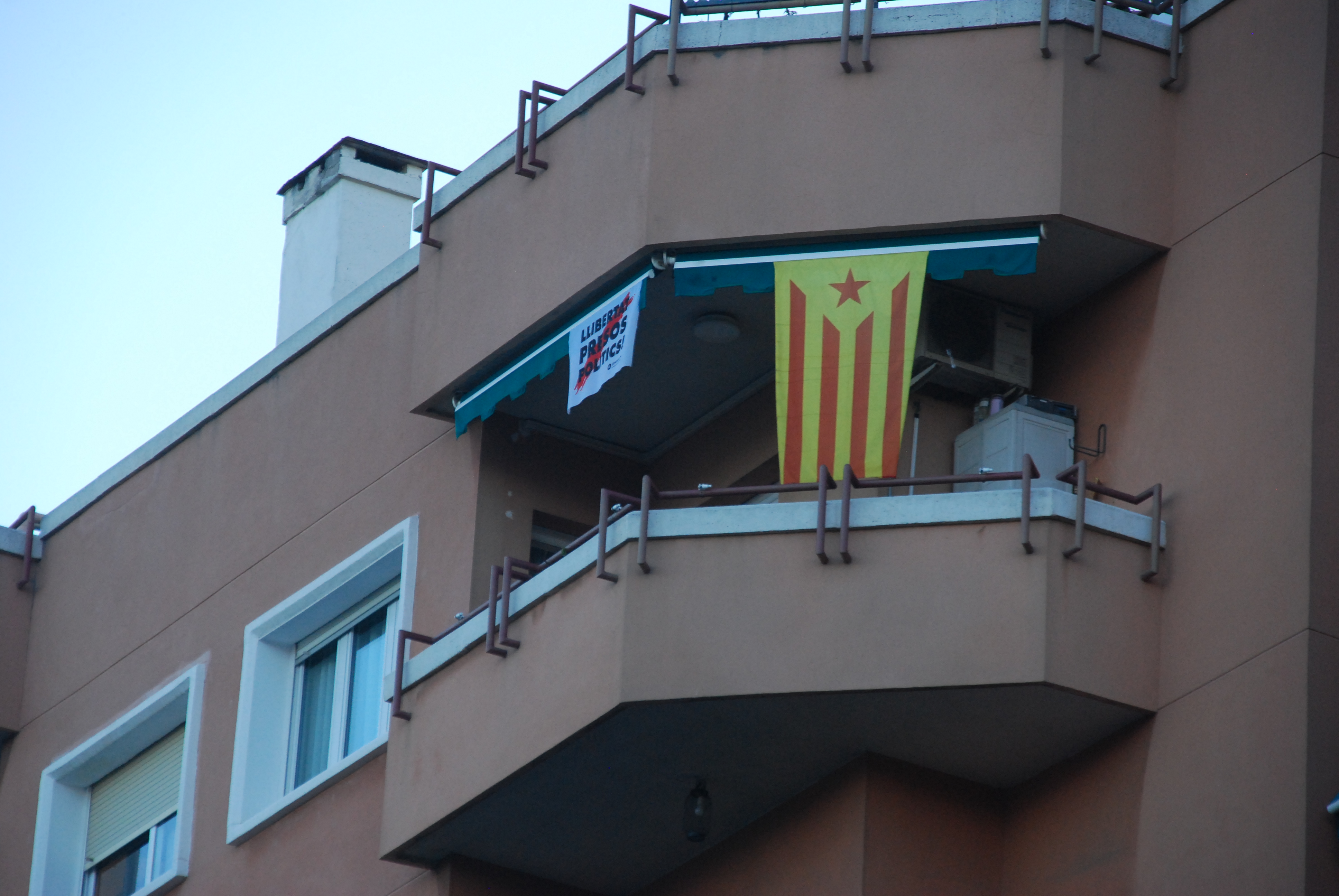
This kind of "Estelada" is not as well-known as its blue counterpart, but can be easily seen around the Catalan capital. It appeared in the Seventies and was promoted by the "Partit Socialista d’Alliberament Nacional" (Socialist Party for National Freedom). It’s related to the promotion of an independent and socialist state. It’s also renowned as being used as an element in the logo of the far-left CUP party.
4. The black flag
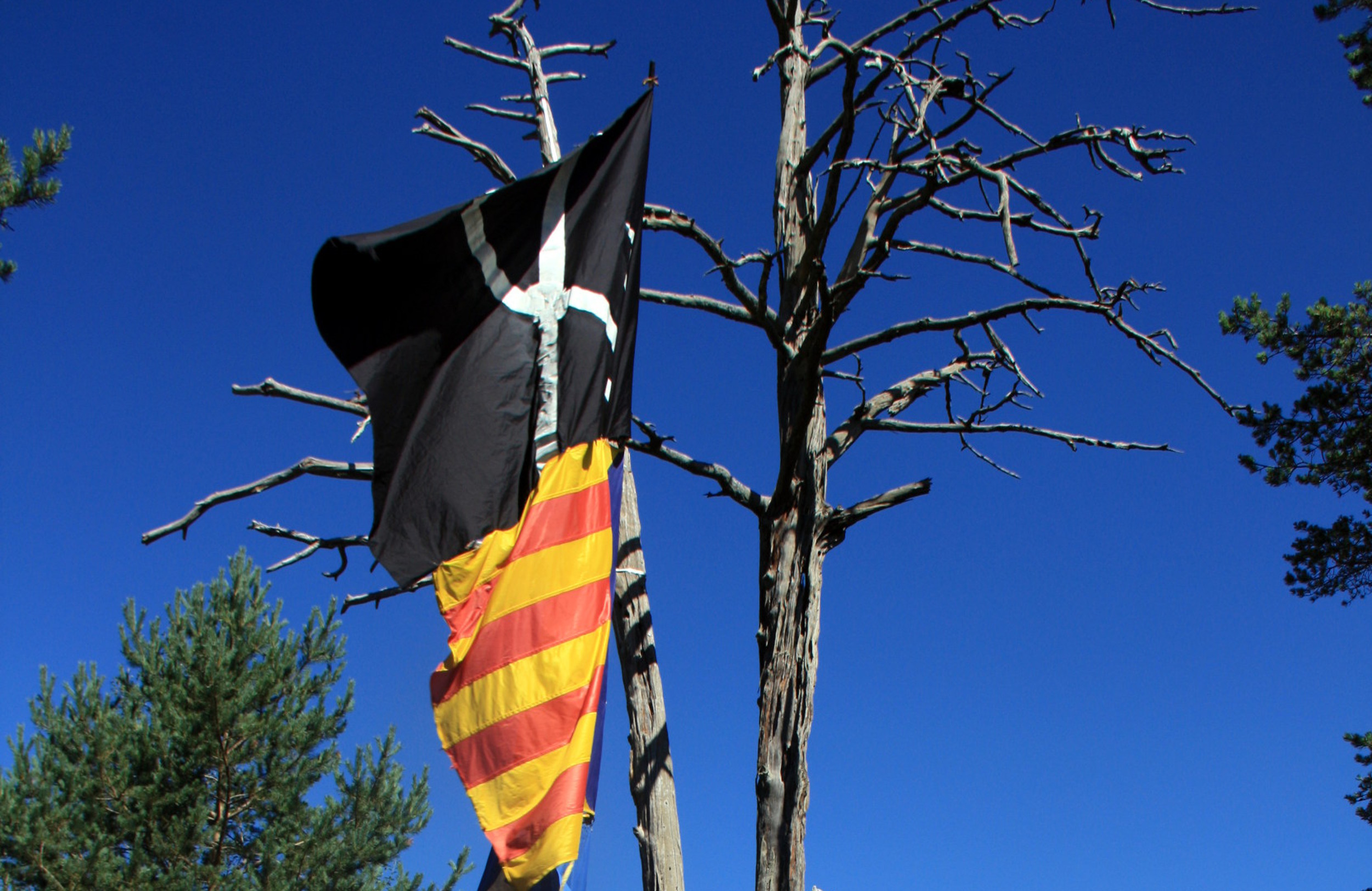
Often, fewest people know the meaning behind this flag, even among pro-independence voters. It finds its place in history, and documentation of it goes as far back as the 14th century. It wasn’t until the tercentenary of the 1714 facts, though, that it became popular. It stands as a symbol of resistance and strength, and many Catalan town halls hung it from the building during the 11th of September 2014, the Day of Catalonia.
It may be hard to find on Barcelona’s balconies, but as a badge of the pro-independence movement, it is starting to gain popularity.
5. Yellow ribbons
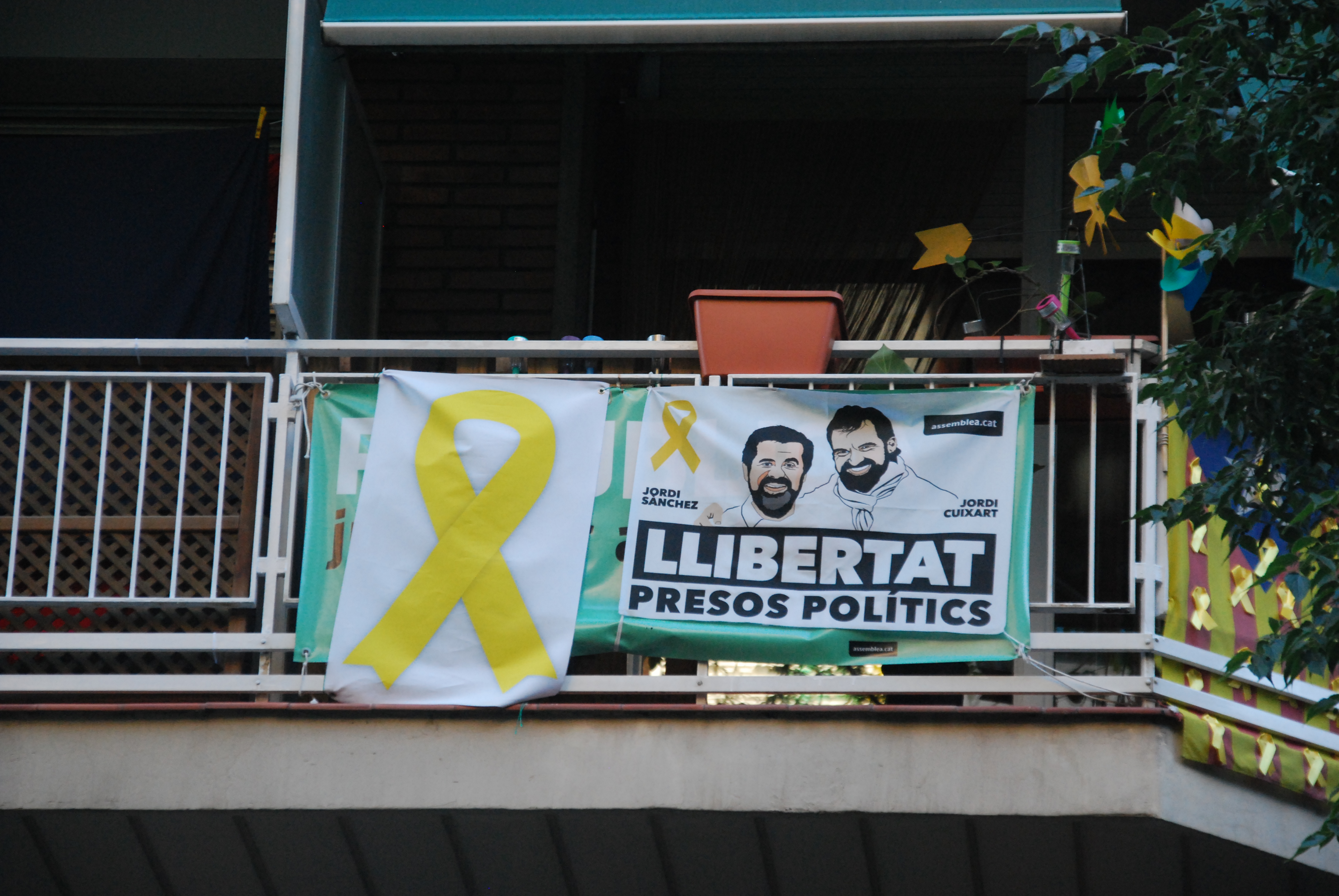
After the blue “Estelada”, these kinds of symbols are very common to see when moving around the city. Most of them are given out by main grassroots pro-independence organizations Òmnium Cultural and the Catalan National Assembly (ANC).
Starting when pro-independence leaders Jordi Sànchez or Jordi Cuixart (the ANC and Òmnium Cultural leaders at the time) were put in pre-trial prison, banners began to appear demanding the freedom of "political prisoners." Yellow also morphed into the color of solidarity with Catalan leaders in jail or abroad, and has recently been at the center of a harsh battle of symbols in Catalonia.
6. ‘La Rojigualda’
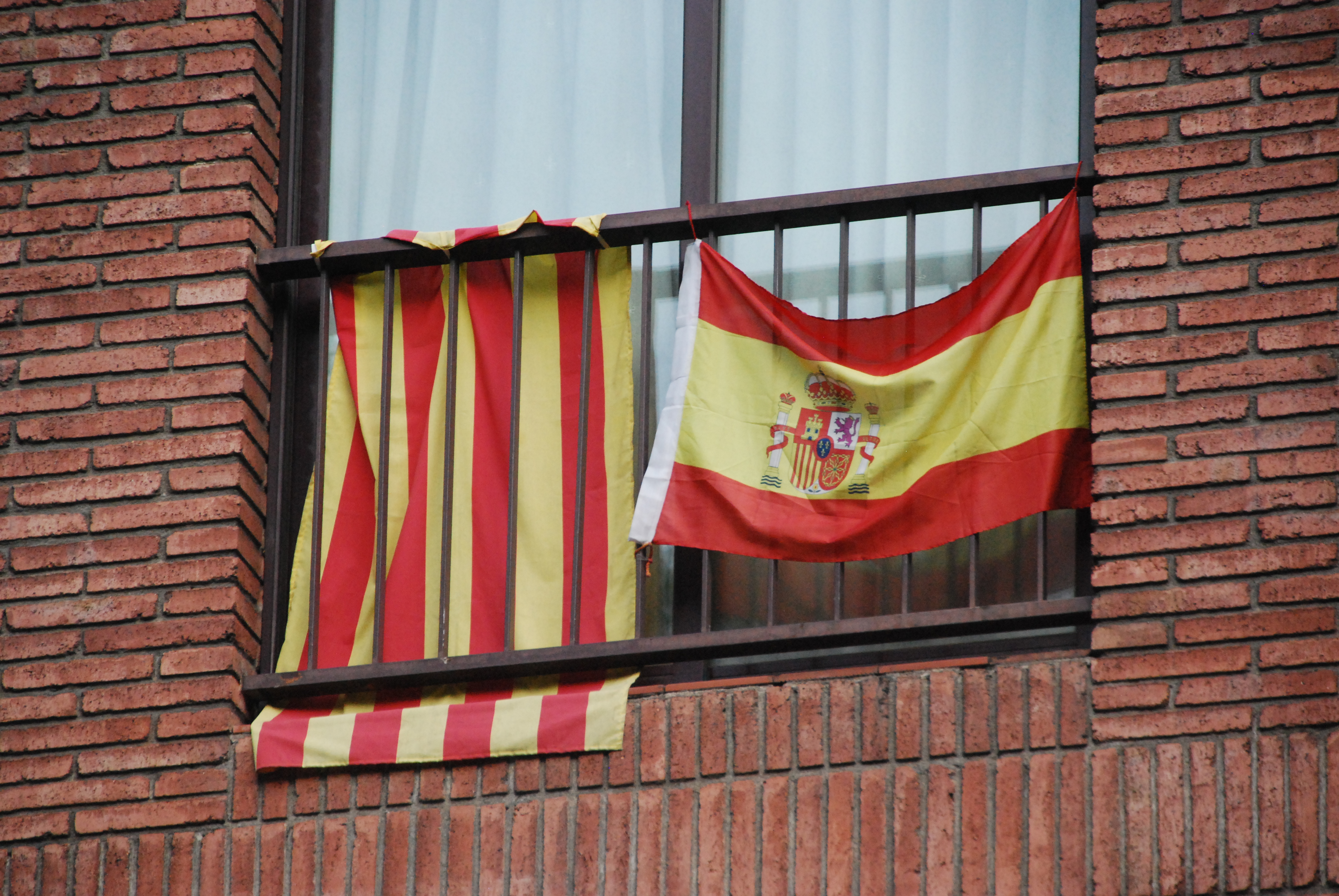
The official Spanish flag is maybe one of the easiest flags for foreigners to spot. It was not very popular in Catalonia some years ago, but with the referendum, people against the independence movement have started to hang them from their balconies. It is sometimes found next to ‘La Senyera,’ to symbolize a unionist perspective.
7. The ‘Tabarnia’ flag
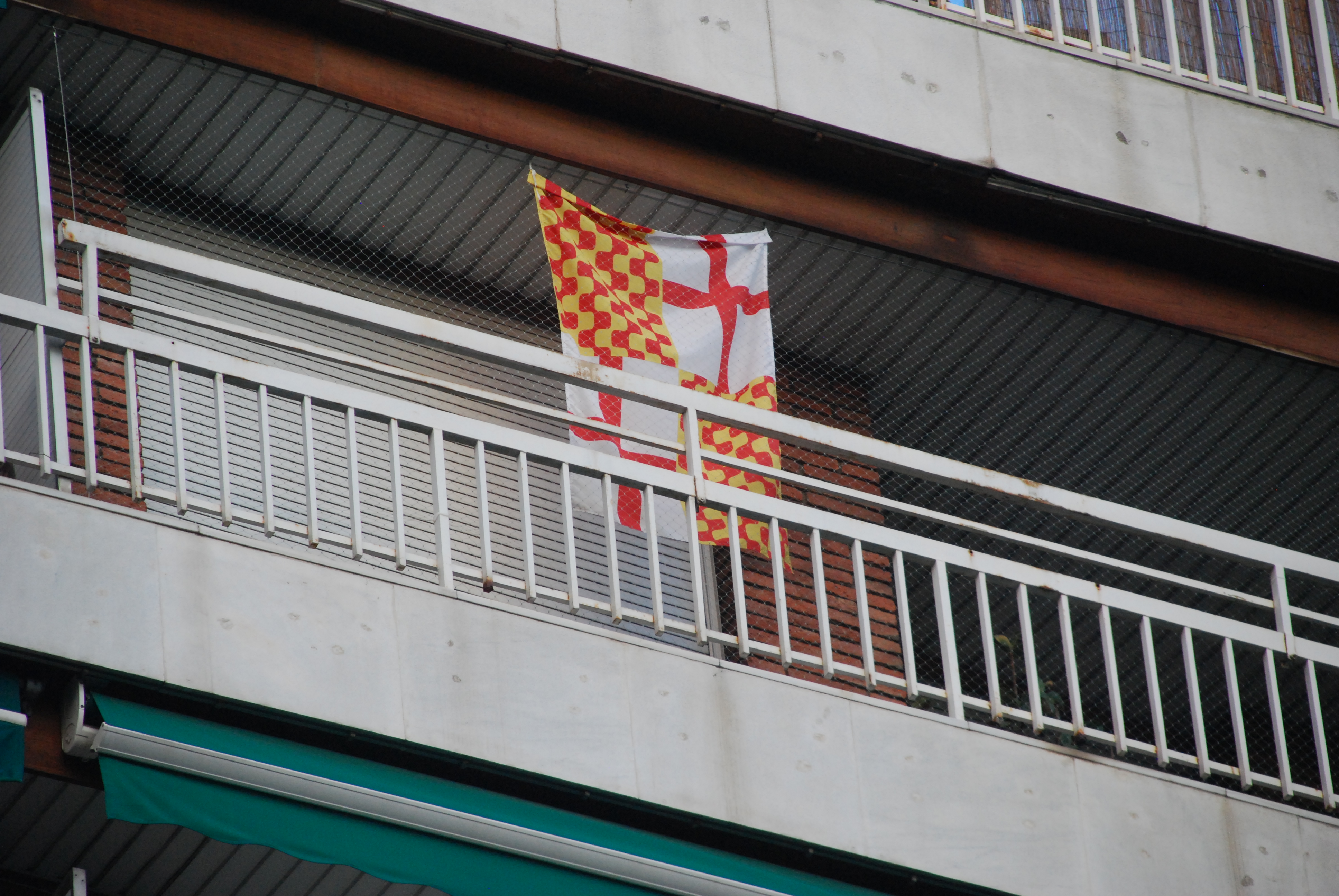
Back in 2017, a political movement called the Platform for Barcelona’s Autonomy started to use the term ‘Tabarnia’ to define Tarragona and Barcelona, the two provinces of Catalonia in which the support for the independence movement is the lowest. It’s a satirical joke that argues that, if Catalonia declared independence from Spain, the fictitious region of Tabarnia would separate from Catalonia, and would become a new Autonomous Community of Spain.
The “Barcelona is not Catalonia” organization created the flag using the city flags of Barcelona and Tarragona. What started as a joke has gained support, with the flag even being displayed on balconies throughout the city and thousands of people marching in Tabarnia's anti-independence rallies.
8. The Republican flag
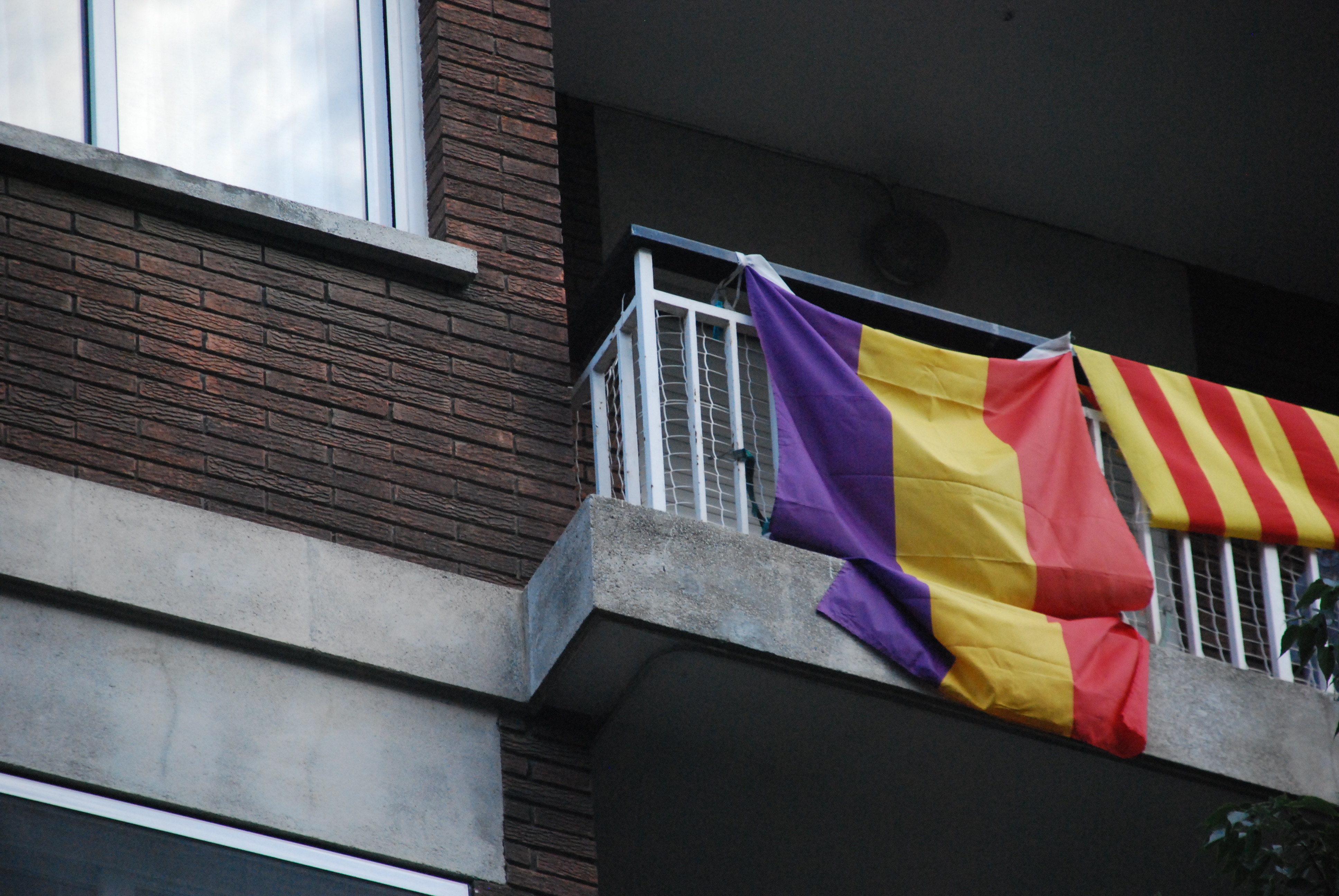
That of the Second Spanish Republic was the official flag from 1931 until 1939—the year when the Spanish Civil War ended and the Republicans, who defended the democratically elected government, lost to Francisco Franco and fascist forces. The independence movement is related to the rejection of the Spanish monarchy and the aim of creating a Catalan Republic; some pro-independence supporters display this flag on their balcony, but also citizens who want to remain in a Spain, but for it to become a republic.
This is only the foreword of the wide sample of flags that can be seen on the balconies of Barcelona. Nevertheless, Catalan people believe in more things than just politics. If you want to learn more about the other kind of flags and symbols like the purple banner (feminism) or the rainbow flag (LGBT movement), you will have to wait until the next chapter.